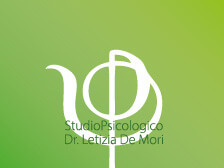SUICIDE IN ADOLESCENCE

Suicide in adolescence: unheard pains! The tragedy of the Frisi high school
Given the latest news, the figure of the School Psychologist seems increasingly necessary to intervene preventively on suffering

Monza experienced a tragedy, in particular the Frisi high school: two boys, respectively 19 and 18 years old, took their lives fifteen days after each other. According to police investigations, no connection emerges between the two tragedies that occurred.
The suicide today represents one of the leading causes of mortality in the age group between 15 and 19 years, representing an absolute priority in terms of prevention . The incidence intercepts a gender difference: young males commit suicide more often than young women. However, the latter make numerous suicide attempts and often develop a clinical history of depression .
The action of suicide is also accompanied in the male gender by the abuse of substances, such as alcohol and drugs, which often contribute to the alteration of behavior ( aggression and impulsiveness ) resulting in the fatal outcome; unlike the female gender in which the development of a depressive clinical history leads to a request for help and therefore to the prevention of suicide.
It is useful for the State to offer valid spaces for our young people to think about themselves even in times of difficulty, it is useful for the State to work for the well-being of our children when they are still alive and not just to mourn with them. that "remain". Not taking preventive measures in suitable places, such as school, where children spend about 12 years of their life and about 1400 hours a year means leaving difficulties and pains completely unheard.
Risk factors and protective factors: the data to build prevention! We have numerous data that allow us to identify which are the risk factors, that is all those variables that tend to be present more frequently in cases of suicide, compared to preventive factors , that is all those variables that indicate which aspects " enhance " to decrease the risk of suicide.
Risk factors:
- low socio-economic status, poor education and unemployment;
- dysfunctional family models accompanied by traumatic life events . Dysfunctional models are characterized by the presence of a high level of intra-family conflict, the presence of psychopathology in the parent, stories of substance abuse or previous suicide attempts by the parents;
- high correlation with depression, disorders d ' anxiety , eating disorders , disorders related to substance abuse and ultimately psychotic disorders.
Protective factors:
-
positive family models: good relationships, source of emotional support for the adolescent;
-
development of one's own personality through the" enhancement "of social skills, including the ability to ask for help and the ability to listen to the other who is the same age or adult;
-
socio-cultural models: integration, relational well-being with school users (class group and teachers), support.
“What depression? he's just listless! "
I like to think that these aspects identified by the clinical literature really serve their concrete use, or to offer spaces for thinking about one's pain or simply one's doubts and uncertainties. In order for this to happen, I believe it is necessary to get out of the search logic of "the culprit", but it is urgent to think of the undoubted responsibilities that legislators have starting from the innovation of a great educational agency: the school. Responsibility that lies in concretely innovating the school according to the needs of our children and the teaching staff, not overloading the latter with the demand for skills that their role does not provide.
The ability to grasp a difficulty in the phase of "problem behavior" even before it becomes full-blown psychopathology today requires the presence of a School Psychologist, whose role must not be limited to the "emergency event" or "post mortem" or even to the workshop foreseen in the “lucky” school, but it must be a right for all children, teachers and families.
Not having a figure in charge of intercepting typical signals can lead to the fatal mistake of responding to symptoms with a personal judgment on them, creating a vicious circle of: not listening, suffering and, ultimately, tragic events. That boy who appears listless to us is sometimes not:
-
psycho-motor slowdown;
- hopelessness (lived of sadness and melancholy, without hope);
- anhedonia (lack of interest and boredom);
- asthenia (physical fatigue);
- arrears (divestment in the world);
- transition to self and hetero aggressive act (substance abuse, violent behavior, suicide attempts)
they are symptoms that do not need judgment, but the right competence to be recognized and accepted: "While compassion does not nourish self-esteem, empathy favors it starting from the suspension of judgment". Our kids ask us for tools, in some cases for help, and it's time to suspend our judgments and act!
Suicide is not a bolt from the blue: Suicidal students give people around them sufficient warnings and margins for action (NESMOS)
and it is precisely for these margins of intervention that the legislators are responsible. Italy remains one of the few European countries in which the profession of the School Psychologist is neither recognized nor regulated at an institutional level. Numerous bills have been proposed in this regard which to date have left the country in a stalemate or, better still, in a situation of absence of services for clearly emerging needs.
The non-clinical intervention of the School Psychologist provides for actions to promote well-being at multiple levels:
- individual, intended for the single individual who can be any user of the school structure;
- relational, intended for the relationship of two individuals or group dynamics;
- organizational and community, intended for the proper functioning of the school understood as a complex organization.
The school could become a privileged space for primary intervention, if properly organized, as reported by DORS, according to some specific modalities aimed at promoting mental health with:
- inclusion in curricular programs;
- the articulation into the key components, namely health promotion, education and prevention, intervention evaluation and post-intervention;
- involvement of health professionals who collaborate with teachers and educators;
- extension to the community context;
- cost - effectiveness evaluation.
It seems clear to me that the cost of the intervention will never be "ineffective", although difficult to find, if the goal is to prevent the death of a teenager.
To know more: https://www.stateofmind.it/2020/02/suicidio-adolescenza-liceo-frisi/@ Studio_Psy_Dr.Letizia_DeMori
@studiopsicologicodrletiziademori
Discover more from Psicologo Verona
Subscribe to get the latest posts sent to your email.





